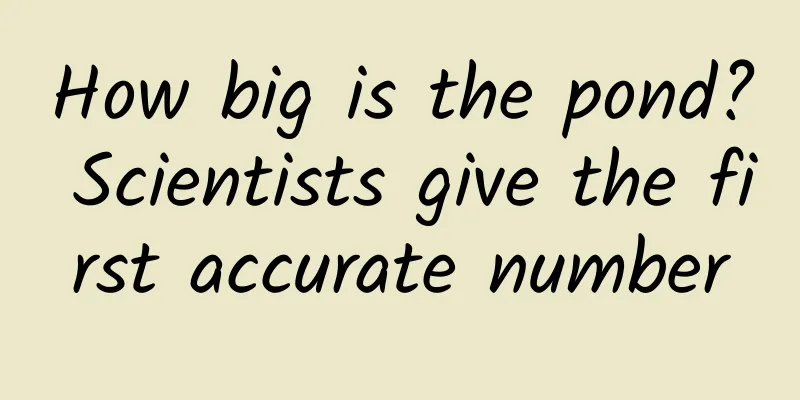How big is the pond? Scientists give the first accurate number

|
Almost everyone can identify a pond, but what exactly distinguishes it from a lake or wetland? A new study co-led by Cornell University provides the first data-driven definition of pond function and evidence of ponds’ unique ecological functions, which could have broad implications for science and policy. The related research was recently published in Scientific Reports. Image source: pixabay "The lack of a universal definition of a pond causes a lot of confusion, from the difference between a pond and a lake to different definitions used by government agencies for aquatic monitoring programs and even accurate modeling of the global carbon budget," said Meredith Holgerson, assistant professor of ecology and evolutionary biology and first author of the paper. "We wanted to assess how scientists and policymakers define ponds and examine whether ponds are functionally different from lakes and wetlands," Holgerson said. The study concluded that ponds are small, shallow bodies of water with a maximum surface area of 5 hectares and a maximum depth of 5 meters, with less than 30% emergent vegetation (plants rooted in the bottom and extending to the surface of the water). There are hundreds of millions, if not billions, of ponds around the world, yet they are understudied and largely excluded from monitoring and conservation programs. This is partly because their large numbers make monitoring difficult, and partly because relevant agencies have failed to define them or separate them from lakes and wetlands. This "inadequacy" affects the accuracy of climate models - ponds are high emitters of greenhouse gases and their contribution to the global carbon budget is uncertain. Holgerson and his team examined how scientists defined ponds in more than 500 relevant scientific papers. "We found that there was no single definition that all researchers cited, and that those definitions were often qualitative, such as describing a pond as 'small,'" Holgerson said. The research team also surveyed national agencies responsible for monitoring and protecting water bodies. Half of all states in the U.S. have legislation covering ponds, but only Michigan has a definition of a pond. Other states consider ponds to be bodies of water or lump them together with lakes and wetlands. However, research has found that ponds are different from lakes or wetlands. Further analysis of the literature shows that ponds have unique ecological structures and functions. Holgerson and his team unraveled the relationship between surface area and various indicators of ecological structure or function. "We looked at parameters such as primary production, respiration, chlorophyll levels, greenhouse gas emissions, diurnal temperature range, and rates of gas exchange with the atmosphere," Holgerson said. "Nine out of 10 ecosystem parameters were nonlinearly related to surface area, suggesting that ponds really do act differently." They also examined how these ecosystem parameters related to depth and emergent vegetation and again found non-linear relationships. They used thresholds for changes in water body function with surface area, depth, and emergent vegetation to determine its definition. Holgerson said the unique shape and characteristics of ponds mean they should not be subject to the same monitoring standards as lakes or wetlands. "For example, ponds may naturally have higher nutrient concentrations and higher methane fluxes. We may need to develop unique water quality criteria for pond monitoring." More research is needed to refine the definition of ponds, particularly to better understand the boundary water bodies between wetlands and ponds, ponds and lakes, and how size, depth, vegetation, and other variables affect the function and classification of ponds. Holgerson hopes the new definition will draw attention to ponds as unique, important ecosystems that deserve to be studied, monitored and protected. “Studying and monitoring ponds can help us figure out how these abundant bodies of water function.” “There’s also a big human element,” Holgerson said. “Many people have connections to ponds — childhood memories of catching frogs in a nearby pond or learning to fish.” Related paper information: https://doi.org/10.1038/s41598-022-14569-0 China Science Daily (2022-07-08 2nd edition International) Editor | Zhao Lu Typesetting | Guo Gang |
<<: Please parents, stop saving! These 7 summer illnesses are caused by saving...
>>: If a wild boar falls down, will a passing wild boar help it?
Recommend
2018 Short Video App Distribution Insight Report!
The 2018 mobile Internet's annual "newco...
Animal ugliness contest, let's see whose "ugly" thing this is...
(Statement: This article is from Knowledge Keer. ...
Android 12 is here! Check out the Android 12 preview for hands-on experience
Recently, Google suddenly released the Android 12...
So the question is: Why does Google release a high-priced flagship Nexus?
I believe that many Google fans, like me, were ex...
This Northeastern dish is super delicious, but it is not recommended, mainly for 3 reasons
There are so many delicious foods in Northeast Ch...
How much does it cost to customize the Wenzhou e-book mini program?
WeChat Mini Program is an application that users ...
SEIA: U.S. solar installed capacity is expected to reach 324 GW by 2023
A report jointly released by the Solar Energy Ind...
IP adaptation becomes a gimmick, and the cold winter of TV games has not yet dissipated
Shi Yuzhu once said: In the Internet era, there i...
Redefining the new standard of smart hardcore off-road, Fangcheng Baobao 8 has completely changed the off-road vehicle industry
The off-road vehicle community may really be abou...
Java idioms summary
In Java programming, some knowledge cannot be lea...
How do WeChat fans, APP users, and transaction customers convert into each other?
Many vertical industry businesses are not as easy...
Behind the "30 units" war of words: Xiaomi should not be complacent as it grows up
Recently, the news that Xiaomi was fined NT$600,0...
China Association of Automobile Manufacturers: Brief analysis of the top ten countries in terms of automobile product import value from January to April 2022
According to import data from the General Adminis...
90 days of proven effectiveness, 4 new methods for account building!
SEMers will try new jobs after a period of time. ...
Close iOS 8.3 verification iOS new version system occupancy rate exceeds 40%
On Tuesday, Apple quietly closed the verification...









